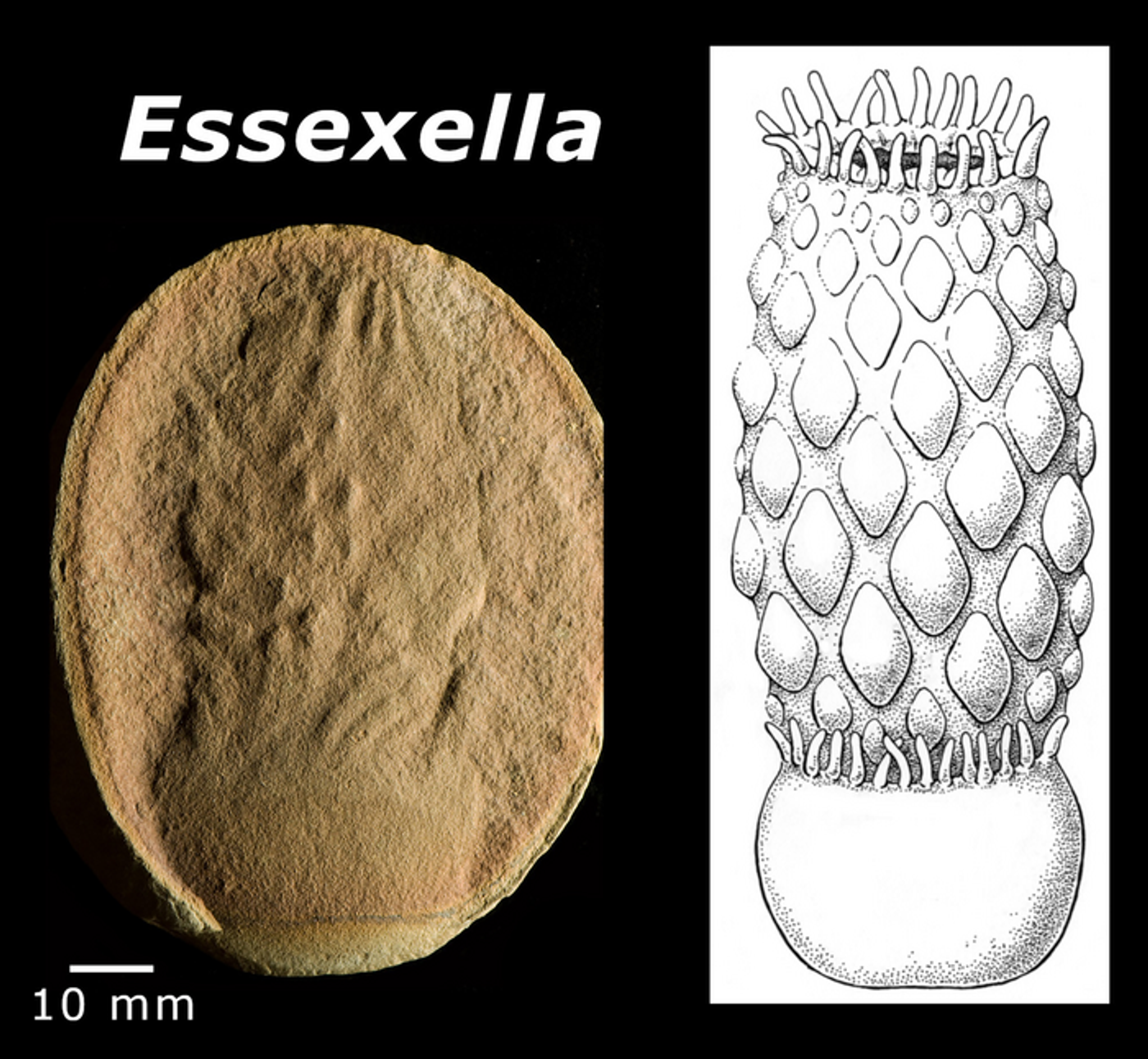Just Flip It Upside Down! Wait, It's Not a Jellyfish?
Have you ever looked at something and thought, "now that's not quite right," and flipped it around until it made sense? Roy Plotnick and his colleagues at the University of Illinois have recently published an article in the journal Papers of Palaeontology detailing precisely that and why.
Popular movies like Finding Nemo, beautifully shot National Geographic clips from nature shows, and popular documentary series remind us of sea anemones. Despite their popularity and millions of visitors annually to the Coral Reef and many other locations, sea anemone fossils are scarce because they are invertebrate fossils and are generally not preserved as well as vertebrate animals. In this instance, what was previously considered a fossilized jellyfish was, in reality, a rare infaunal anemone.
Abive Image: Essexella, a 310-million-year-old fossil sea anemone from Illinois. Credit: Papers in Palaeontology
This particular fossil was discovered in the 1840s in the Mazon Creek Lagerstätte Fossil Deposit, located in Northeastern Illinois. It is of Middle Pennsylvanian age, dating back to approximately 309 million years ago. A lagerstätte is a term of German origin used to describe a sedimentary layer where the organic remains of soft-bodied tissues and skeletal remains are found. The Middle Pennsylvanian age is known for its intense weather patterns and glaciations and is one of the best Paleozoic records of the earth's ecosystem.
Paleontological investigations have allowed scientists to improve techniques and build upon evidence to interpret all the deposit has to offer in terms of floral and faunal specimens. An ancient delta allowed for the accumulation of sediment deposition, curating exceptional preservation of soft-bodied organisms.
The Mazon Creek fossil deposit has been compared to twinkies in the apocalypse in terms of preservation, according to fossil preservation expert and study co-author James Hagadorn, from the Denver Museum of Nature and Science. The most commonly found fossil is "the blob." They are so commonly found that they are often sold cheaply in open public markets or discarded. The first detailed study of the collection was in 1976 and showed that out of 85,180 specimens, 42 % were just ‘blobs’. In 1979, professor Merril Foster of Bradley University looked through the recently classified specimens and determined them to be jellyfish of the Essexella asherae genus or medusae.
It wasn't until Roy Plotnik used modern taxon to reassess for a new comparison that it was recognized for its proper form: a sea anemone. More simply, he flipped the fossil upside down. Revealing a new, previously unseen, form. Thousands of specimens were examined from private collections and institutions such as the Field Museum, Yale Peabody Museum, Royal Ontario Museum, Manitoba Museum, and the University of Chicago.
By comparing it to modern anemones, further analysis and morphological reconstructions, and the variable preservation factors, the morphology of the truncated distal end of the anemone displayed tube-like structures covered by a rugged bell-shaped umbrella-style curtain. This bell shape actually turned out to be the muscular foot used by sea anemones to wiggle and burrow along the seafloor, and the curtain was, in fact, the body of the anemone.
Having been a prominent species during the Paleozoic era, it is not the only of its kind to have been misinterpreted. There have been six other previously misidentified fossils classified as being medusae, some with diagnostic features, others not. Many have been reassigned since after further analysis.
Despite their ubiquitous nature 300 million years ago, their fossil assemblages are remarkably rare, even in the well-studied creek formation. While not quite as old as other formations, such as Chengjiang or the Cambrian Burgess Shale, it still has a lot of information to provide for future analyses.
Cover Photo Credit: Papers in Palaeontology
Sources: EurekAlert, Wiley Online, Smithsonian, Research Gate, Denver Museum of Nature and Science, University of Illinois, Science Direct









